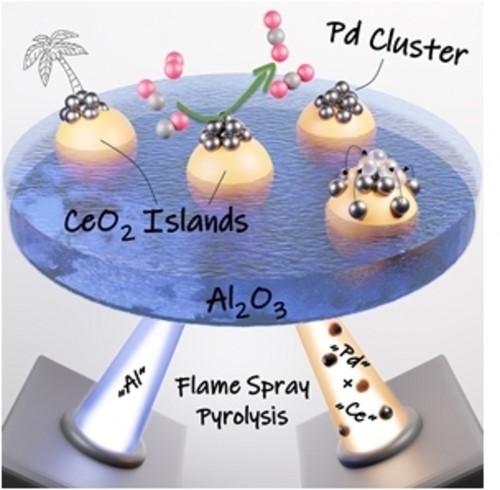Clean Air and Emission Control
Environmental pollution has been a global matter of concern for many years, leading to progressively stricter regulations. Particularly, air contamination by emitted NOx, CO, CO2, CH4, volatile organic compounds (VOCs), NH3 and particulate matter is regarded as a major problem of our society with harmful effects on human health and environment. In addition to minimizing the emissions directly at the source, the catalytic aftertreatment of the emitted pollutants is regarded as one of the most promising approaches. This strategy applies to both, mobile and stationary emission sources from industry to transportation and even household.
To comply with the more stringent emission laws a continuous development of new and improved generation of exhaust gas aftertreatment catalysts is required. In this context, our group is conducting numerous studies on different classes of catalysts applied in the aftertreatment system of energy conversion processes, such as natural gas combustion as well as for reducing household emissions. By fundamental understanding of catalyst structural and mechanistic aspects, we aim at improving its efficiency and durability. For example, we were able to significantly enhance the catalytic performance by directly acting on the noble metal particle size in a Pt-CeO2-based catalyst. In collaboration with our industrial partners, we observed that short reducing pulses lead to a slight increase of Pt particles at mild temperature, which has a tremendous effect on the catalyst activity. Furthermore, we designed Pd/CeO2 catalyst on a nanometer scale to rationally tailor the threshold of cluster formation in noble metal-ceria catalysts by using CeO2 nano islands, which are finely distributed on Al2O3 support. The spatial separation of CeO2 entities prevents highly active Pd clusters from redispersion and strong sintering during CO oxidation reaction.
For more details, have a look at the Center for Emission Control Karlsruhe with Prof. Olaf Deutschmann as well as the homepage of our collaborative research center TrackAct, in which over 25 groups investigate the catalytic active centers in emission control catalysts on different length scales.
Dr. Maria Casapu
ITCP
Publications
Related publications (selection):
B. B. Sarma*, F. Maurer, D. E. Doronkin, J.-D. Grunwaldt*, Chem. Rev. 2023, 123, 1, 379-444.
Available positions for students
| Topic | Title | Type | Supervisor |
|---|---|---|---|
| Emission control | tbd | tbd |
Contact Dr. Maria Casapu |


